The Return of The Barbarian Prince
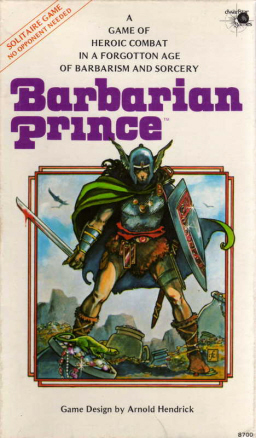 If you’ve spent much time on the Black Gate website you’ve probably seen Barbarian Prince get mentioned at least once.
If you’ve spent much time on the Black Gate website you’ve probably seen Barbarian Prince get mentioned at least once.
A solo board game from the ’80s designed by Arnold Hendrick, Barbarian Prince is a little like one of those old “choose your own” adventure books, except that the order of events is far more random, for they’re generated by rolling on a number of tables depending upon your location on the map and are partly affected by choices you have made and gear and allies you may have accumulated in your travels.
It never plays the same way twice, and a lot of us find it glorious fun — although it is difficult to win. John O’Neill is a huge fan of the game, and he got me interested some years back when he gave me an extra copy he had lying around.
When I heard rumors of an unofficial redesign over at BoardGameGeek, I dropped by to take a look and was incredibly impressed. Someone — Todd Sanders, as it turns out — had gotten permission to create a new game board, pieces, and redesign the layout of the rule and event books.
The result was brilliant, beautiful, and a completely professional product.
It’s available, free, for anyone who wants to download the files and create their own version of the game (the original version of Barbarian Prince is also available for free download, courtesy of Reaper Miniatures and Dwarfstar Games).
I contacted Todd to learn more about his redesign and what had inspired it, and discovered he was responsible for a number of stunning games of his own creation.
We talked about game design, Print and Play games, and, naturally, Barbarian Prince. Larger versions of the lovely game boards can be seen by clicking on their pictures.
Note: This article is reposted from the Black Gate web site, where it appeared in 2012.
An Interview with Todd Sanders
HAJ: Let’s talk a little about your own background. Have you always been a gamer? What led to your interest in game design, and how long have you been involved with it?
Todd: About 10 years ago I became interested in game theory and, as a part of that, I started reading about ancient board games, collecting several of RC Bell’s books –- Board and Table Games from Many Civilizations and The Boardgame Book, as well as Sid Sackon’s A Gamut of Games.
I started making my own versions of some of the games in these books, fascinated by how the structure of the games evolved over time and how different cultures used the same kinds of components but games varied so wildly.
This led me to check out one of our local game stores (we are lucky enough to have 2 great ones here in Pittsburgh – Games Unlimited and Phantom of the Attic) and like many have – ended up really finding a great hobby and community.
As to game design, I’ve only been doing that for a little over a year.
I began by creating player aids to games I liked, then started redesigning components (my first was a new board for the game Manhattan).
I started to notice the Print and Play community on BoardGameGeek.com (BGG) would run various design contests and reading those forums got me interested in trying my hand at designing some simple dice games at first, then, later, more complex ones.
I am a graphic designer (and have a degree in architecture) so I feel I have skills and an education which taught me about thinking logically through a series of steps and organizing and presenting information.
The work of Mike Doyle, who is an amazing boardgame graphic designer, showed me that I could integrate much of what I was creating visually by day into layouts for games and components.
What do you think it is that people like so much about Barbarian Prince?
Barbarian Prince I believe appeals to people because of its narrative structure.
A number of games from the early 1980s (many of these produced by Dwarfstar) used what is called a paragraph game mechanic where dice would be randomly rolled causing events to occur, referenced from one or several books (this system has more flexibility than the competing “choose your own adventure” books popular as well at the time).
There are a large number of possible event outcomes and from these a story develops and the game becomes an immersive experience.
These types of games can provide distinctly different narratives each time the game is played. This is all coupled with the fact that BP is a solo game in which scenarios can sometimes take several hours to play – so you get a rich game experience and one you can return to again and again with a different outcome each time.
I think games are often successful due to the “if only” factor – “If only I had done this … I would have won. I need to play again” — This is what makes me, and I suspect many, return to games like Barbarian Prince — the choices we make affect the outcome. Change the choices, alter the outcome.
Why did you decide to redesign the game?
Several designers on BGG inspired me to try my hand at a re-design/reboot.
There are a great number of games from the early 1980s that are rewarding gaming experiences but due to older production methods or scarcity, the games are difficult to find or to play.
In an era where Fantasy Flight Games and other euro companies are producing high quality, sometimes flashy games with wooden components and fully realized art, sometimes older games are judged unworthy by their visual appearance alone. We do not always take the time to appreciate what is below the surface.
Barbarian Prince has a difficult reputation because the rule and event books can be challenging to use. To borrow a software design term, the user interface prevents players from fully engaging in the experience.
My day job is in large part about creating a visual/textual systems for understanding and expressing information. Whether I am designing a book or a business card or an infographic I am always interested in how I can present information in a clean and easy to understand method so that the intended message can be understood.
So BP seemed a likely candidate for a reboot. Due to Reaper Miniatures licensing agreement with Dwarfstar, the game is available for free to those wishing to print and play it.
I spoke to people involved with the game about any copyright issues and they were very generous in allowing me to work on a redesign.
It was important to me, during the design process, to respect the original artist and designer’s work.
My main focus on the redesign was making the rules and event books easier to navigate so that they weren’t a barrier to playing the game itself. How events are presented and charts and tables designed should not detract from finding the information needed to enjoy the narrative.
The work of information designer Edward Tufte, who I am an admirer of, is a good starting point for anyone wanting to understand how information can be presented.
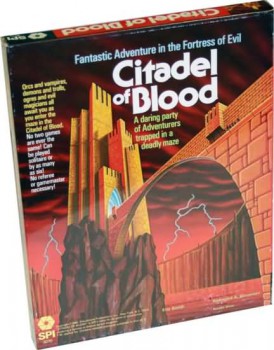 How much time does a typical redesign take you?
How much time does a typical redesign take you?
Barbarian Prince was my first redesign and it took about a month to complete.
I probably spent around 40-50 hours working on the game, redesigning both books, all the tables and charts, and redrawing the map which was a large undertaking.
I am not an artistic illustrator so my work is usually text and icon based and it took time to find the right “feel” for what I wanted to do with the map.
I am very pleased with the final design. It strikes a good balance of art and information for me. It is not a copy by any means of the original but an interpretation.
I am also very grateful to several other boardgamers before me who created errata FAQs and corrected rule sets as well as a BGG users — Jumbit and Julian Jimenez (among others) who created a series of player aids which simplified looking up events.
All work builds on those who come before us.
I am currently at work on my 3rd rebuild, having completed a redesign of Citadel of Blood (SPI), a wonderfully innovative fantasy game from 1980 designed by Eric Lee Smith.
Right now I am redesigning Star Smuggler, another paragraph-based Dwarfstar game. This one has a science fiction theme and lets me try my hand at that genre which has its own rich visual systems.
After that is done … I’ve started looking into another old game – Hammer of Thor, which has a daunting number of cards to design but holds some fascination for me from a mythological standpoint
How has your work been received?
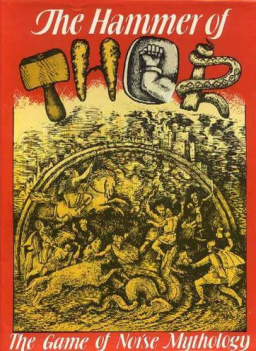 I’ve been overwhelmed by the positive response.
I’ve been overwhelmed by the positive response.
My design, which supports a terrific game, has caused many new players to give the game a try. We reached the top 10 games list on BGG’s Hotness sidebar for a few weeks running and my work was featured on the “hotness” image section of BGG as well for several weeks.
Last week Marco Arnaudo posted a new video review of the game and I was pleased to see my design was the one he was using for his review.
I’d like to make it clear that my work was done to support a game that was already a gem, if undiscovered by many. Credit should go Arnold Hendrick, the designer, and artists Frank Cirocco and Cynthia Sims Millan.
My work may bring gamers to the table but the experience the original design team created is what ultimately people enjoy.
BGG has a great community of creative, supportive people and I am pleased to call a great many of them friends. It would be a dream if what I’ve done might cause a publisher to reprint the game so that new generations could enjoy it.
We are starting to see a revival of older games in new printings – Wiz War and Merchant of Venus to name a couple – I hope there are more.
What do you think explains the rising popularity of Print and Play games? Is there a place where you can meet with fellow game designers and fans and compare ideas and techniques?
Print and Play is a unique subcategory of board games.
Primarily this community is found on BoardGameGeek.com. I’ve mentioned previously that the community runs self-directed contests on all sorts of themes, as well forums on game design, general support and cheerleading and playtesting.
Many designers who win these contests (myself included) have gone on to having our games signed to publishers and have had iOS/Android apps made as well.
I think we feed a desire for interesting games on subjects that big name publishers may not find work with their product lines. We can also take chances and try out new and different mechanics.
Sometimes these work, sometimes not. I think publishers are looking for undiscovered but proven talent and the PnP community affords them the opportunity to gauge the success of games we are creating.
Lastly, the do-it-yourself ethic of actually constructing the games by hand has a lot of appeal to many of us.
Recent design contests have focused on games using only 54 cards, games for solo players, games that use only a single sheet of paper. These design constrains have produced some wonderful games and are relatively easy for beginners to craft.
There is a large “maker” community growing in the world, people finding rewarding experiences by creating things again by hand and I feel like we are part of that movement in our own unique way.
Where can people go to find other good Print and Play games, and where can they turn to learn how best to try their hand at printing and playing them?
BoardGameGeek.com is probably the best source.
Print and Play (PnP) games that I, and many others, design are completely free to download.
Often designers will provide low-ink versions for those who do not have access to color printers. There are a wide number of forum discussions as well on how one goes about making decks of cards, creating folding game boards and boxes and finding sources for the game bits you need for the games.
Craft stores are excellent resources for wooden cubes, pawns and such (I have a feeling many scrapbookers are also PnP game makers because of the tools needed).
There also are a growing number of web sites and production houses (Print and Play Productions, The Game Crafter are two) that will print/craft professional copies of games up for you.
And there are two printing companies in Hong Kong a lot of us use because they print professional quality decks of cards that you can order single copies of.
BGG users maintain a large list of PnP games you can order in this way. Many of us spend lavish amounts of time on these builds creating true works of art.
You’ve designed a number of beautiful looking games, many of them original. Can you tell us a little about your inspiration for them?
My games really follow two separate streams of creation. Much of what I design for the PnP community comes out of my life long love of science fiction, fantasy and fairy tales. I’ve created two lengthy game narratives in the last year:
The steampunk world of Arkady and a series of games with the umbrella title: Aether Captains.
I’ve designed 8 or 9 games in this world and have extensive written notes, maps, and diagrams to support the designing. I’ve posted much of the background information on BGG and invite anyone to design games using what I’ve created.
If you play all the games you’ll notice I change scales — from focusing on events across the world of Arkady, to small solo games about one person in one of the cities of the Grand Compact and it is great that the narrative I’ve build can allow for that flexibility.
All the games, due to my graphic background, have a clearly thought out idea of branding with carefully chosen fonts, colors and consistent terminology. It is my hope gamers, new to the world, have an easy time learning each new game because of these details.
My other main game narrative involves the fantasy setting of Lassadar, a world where magic can have a corrupting influence, even when used for good.
I’ve designed a trilogy of solitaire games (each employing different mechanics to provide an opponent for the player to play against) where the Grayking, once a part of the Council of Wardens, was exiled to the Barrier Planes, imprisoned in his Tower of Ash by three Barrier Gates.
He wishes to return to Lassadar and you need to stop him from doing so.
I liked working in the trilogy format for those games, familiar to readers of fantasy. It allowed me to play with some of the genre conventions in my own way and provide a structured narrative format.
Again, for these games, branding was important and all of the artwork, text and visuals support the atmosphere and the world I am building. This can be an organic process, must like writing a novel and I’ve really enjoyed seeing my creations come to life and others really embracing what I am doing.
I also have begun designing games which are for the euro games market. Typically involving short playing times and themes of building and exploring, these are games that I’ve done a lot of reading and research during the design process and have actively tied the theme of the game strongly to the mechanics of play:
Ragnarok: Aesir and Jotunn (a 2-player card game about the Frost Giants and Asgardian Gods) is under contract with a French game publisher.
This game won an award in one of the BGG PnP contests and was a lot of fun to design. I had been reading Norse myths at the time and the game evolved out of what I was reading.
Serica (a 2-player board game about the ancient silk road trade between Rome and China) and Polders ( a 2-4 player board game about reclaiming land from the sea in the Netherlands) are both under review in Europe and will hopefully be signed soon. Both of these games have a historical under current to them and I’ve worked hard to make sure that the people, places and structures in the games are historically accurate.
Where can your games be found or ordered?
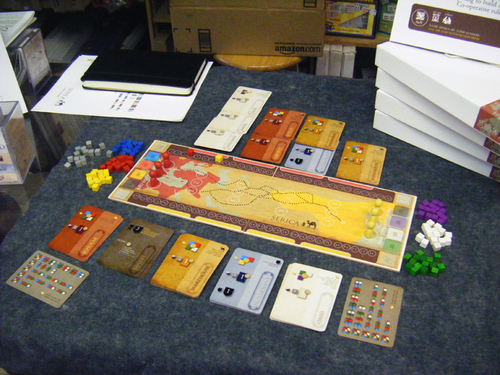
I have handmade copies of many of my games for sale and, because I build them myself, I can only offer small quantities at a time.
I like to call them artisanal editions. All the cards are professionally printed and I include all the dice and wooden cubes needed to play.
The game boards for Sercia are mounted on modeller’s plywood that I cut in my own woodshop.
I have copies for sale through one of my local game stores — Games Unlimited — and they can be ordered through them. Please note that there is a lead time of about a six weeks due to me not being a factory.
Another option for those looking to order is Andrew Tullsen of Print and Play Productions. Andrew prints and assembles many different PnP games from a lot of great designers.
Currently I am working on a solo RPG campaign style game which is done completely in a card deck format (not a CCG or LCG though).
It builds on what I’ve learned redesigning these older paragraph type games as well as my Lassadar trilogy. It is a long term project mainly because I am enjoying getting caught up on the last 30 years of developments in the RPG community.
I am also working on a card game for 2-4 players about Uruk, the first true city of the world, where the different types of cards are played and scored in ways depending on which cards they are played in conjunction with.
I am trying to develop a symbiosis between the types of cards so it is a bit of a Civ-building game mixed in there with strategic choices.
And I’d like to return to the world of Aether Captains that I created over the past year designing some new games for that. These days I carry a notebook around with me for when inspiration strikes.
I like to design games that tell a story, where the narrative and theme are directly intertwined with the mechanics and strategy, hopefully creating a rich experience for the player or players.
It is important to me to continue to develop solo games which I think is a segment of the market publishers are only now beginning to address.
Do you still have time to actually play the games? What are your favorites, first of your own, then of others.
I have time to play a great number of games as well as constantly read rule books. An important part of designing games is understanding how games work, how the concepts of decisions trees, forced scarcity, prisoner’s dilemma (to name a few) interconnect and create the game structure. In order to learn you need to play a lot.
Of my own games I think I am really most partial to Serica, a game I really put everything I’ve learned over the past year into.
Aether Captains: Triad includes 3 mini games using 54 cards and the same set of components, something I am proud of as well and never pass up a chance to play.
I also like playing a solo game called Bibliogamo I designed which is about creating books in a medieval city. Probably though if, I am honest, it is always the next game I am designing that I am most excited about.
My current favorite published games include 7 Wonders, Glen More, Thebes, Notre Dame, Princes of Florence, and Race for the Galaxy, many of which I can play solo.
I have to mention also some great PnP games out there: Jasper and Zot, Chunky Fighters, RoboDerby: Express, Plantation, and Decktet, which can be printed for free.
Todd, thanks for taking the time to answer in such detail. It was a pleasure having you here. Best of luck with all of your gaming endeavors.
Here’s a master list of all the games Todd has designed, with dozens upon dozens of lovely pictures. If you want to see what Todd’s working on now, and how he’s gone about creating many of his games, his forum posts make for interesting reading for anyone even remotely interested in game design and theory.
If you’re interested in trying out Todd Sanders’ Print and Play re-design version of Barbarian Prince, visit the Barbarian Prince page over at BoardGameGeek and scroll down to the file section on the main page. Download the files and have at it! As for instructions on print and play, there are some fine suggestions right here. The original version of Barbarian Prince can be found at the Dwarfstar Games web site.
Inspired by Todd’s beautiful work I decided to build a Print and Play version myself. I’ve been hampered a bit by my limited craft skills, but I got one up and running, and have been playing the game with my son. I’ll tell you about the whole experience in a post next week.
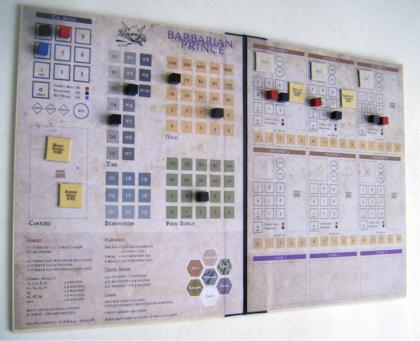
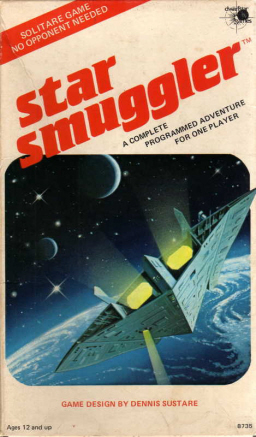
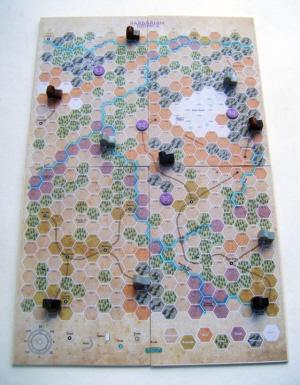
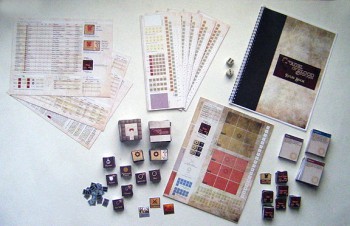
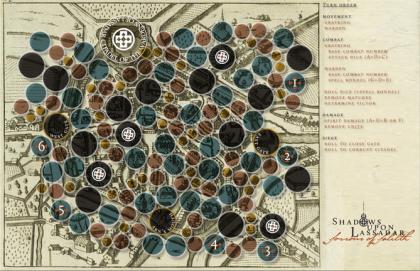
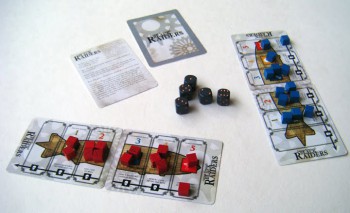
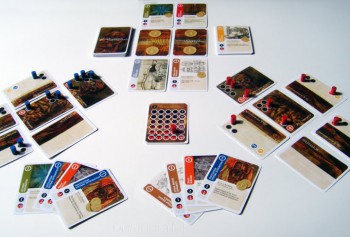
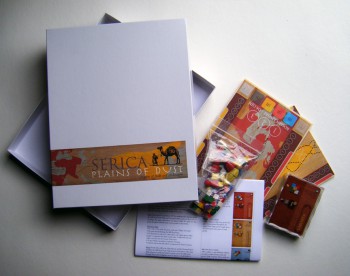
0 Comments